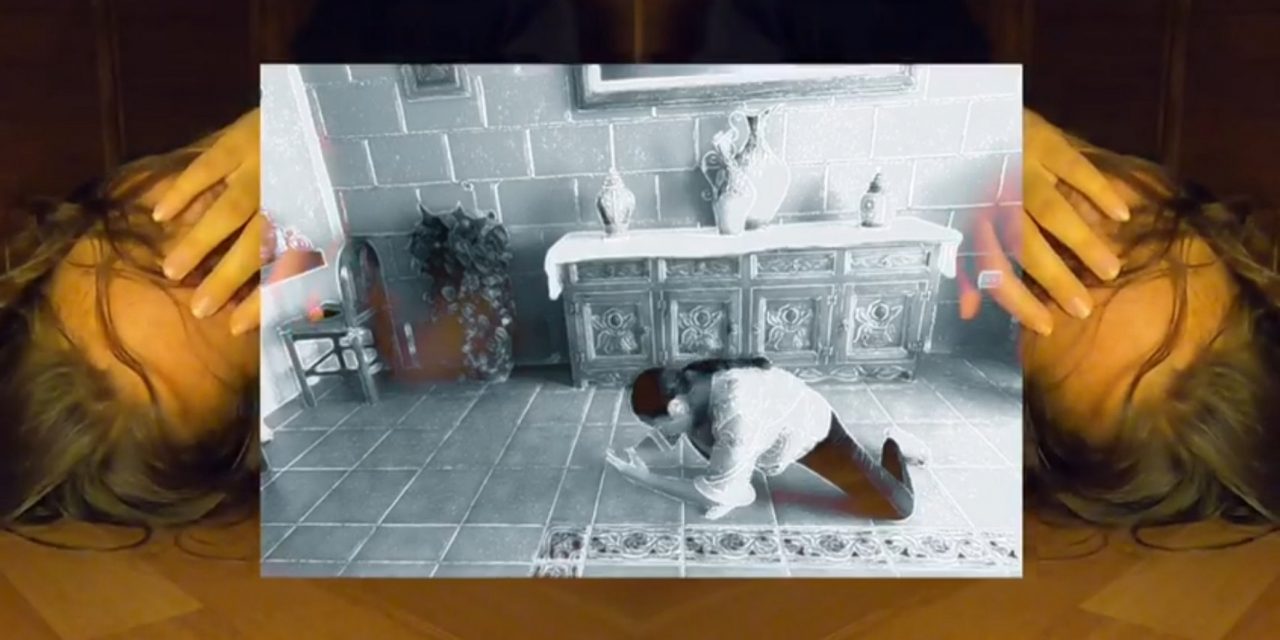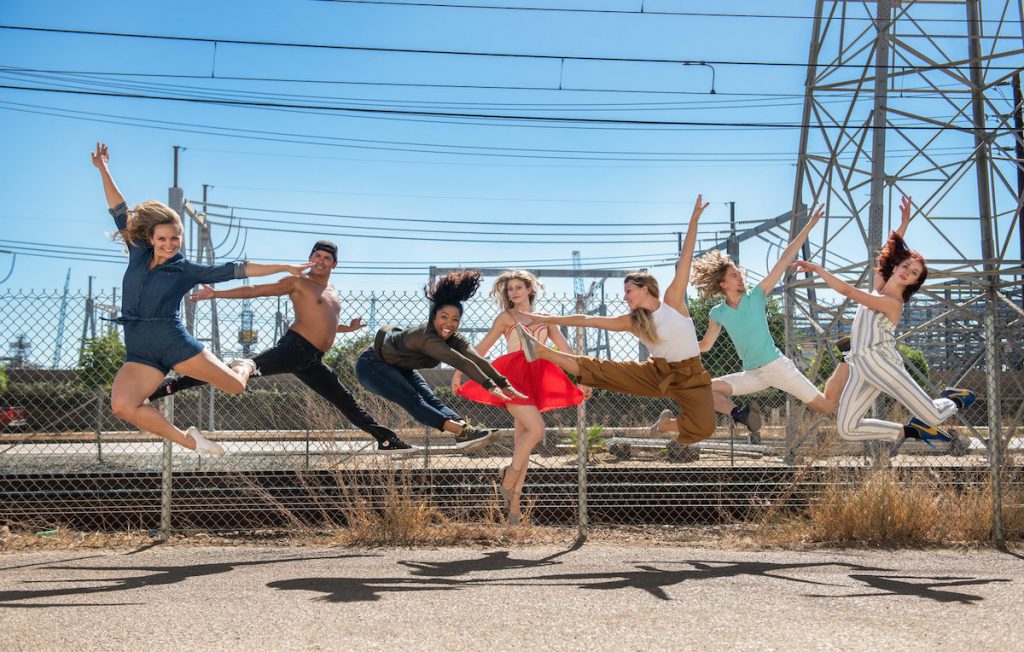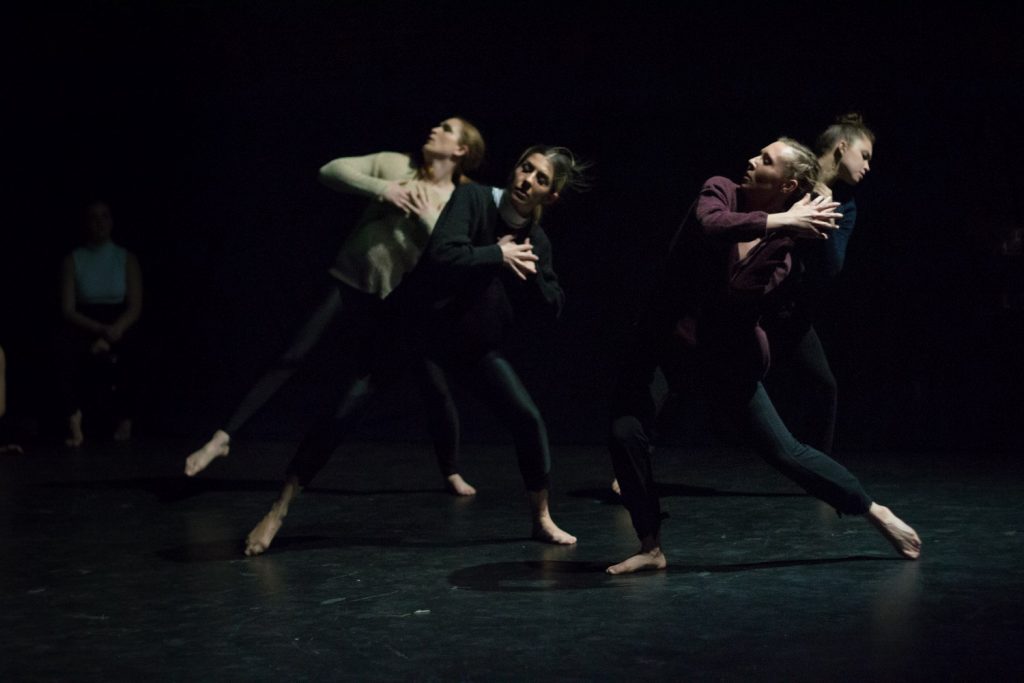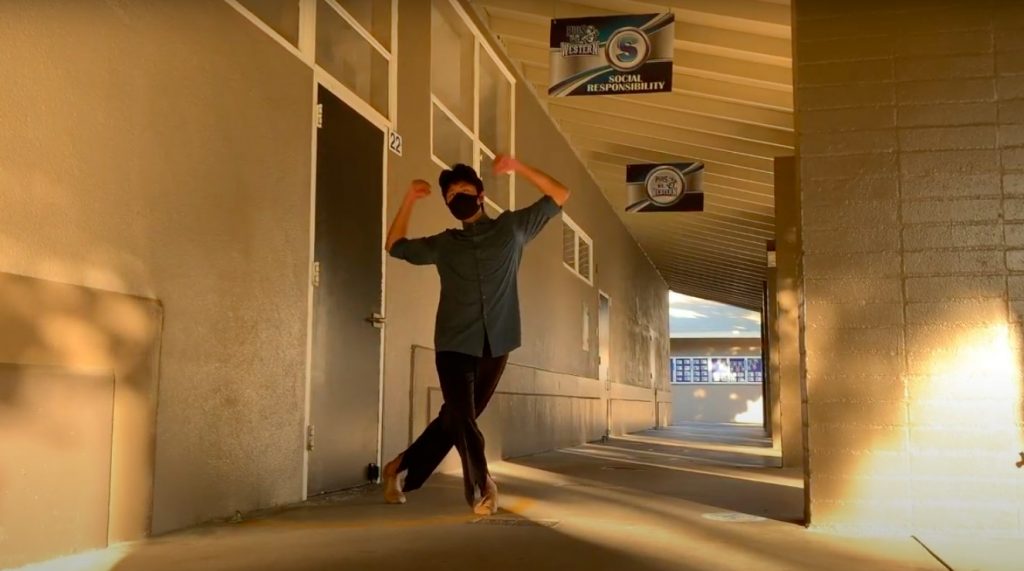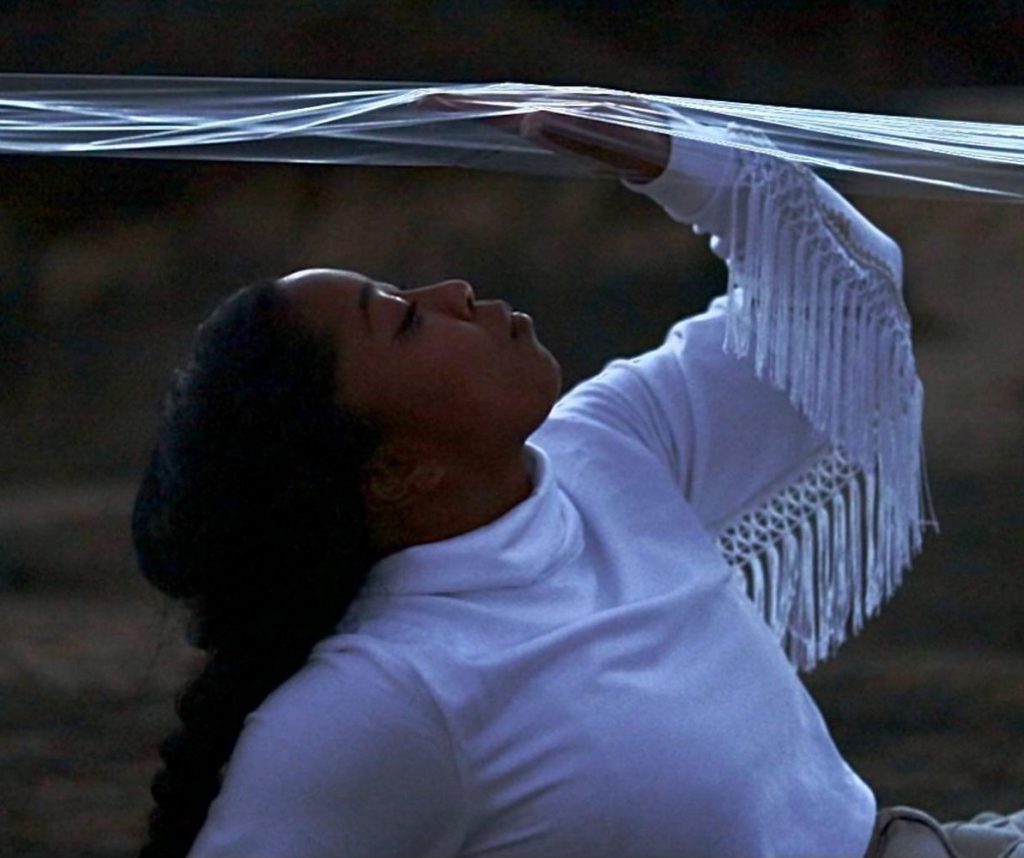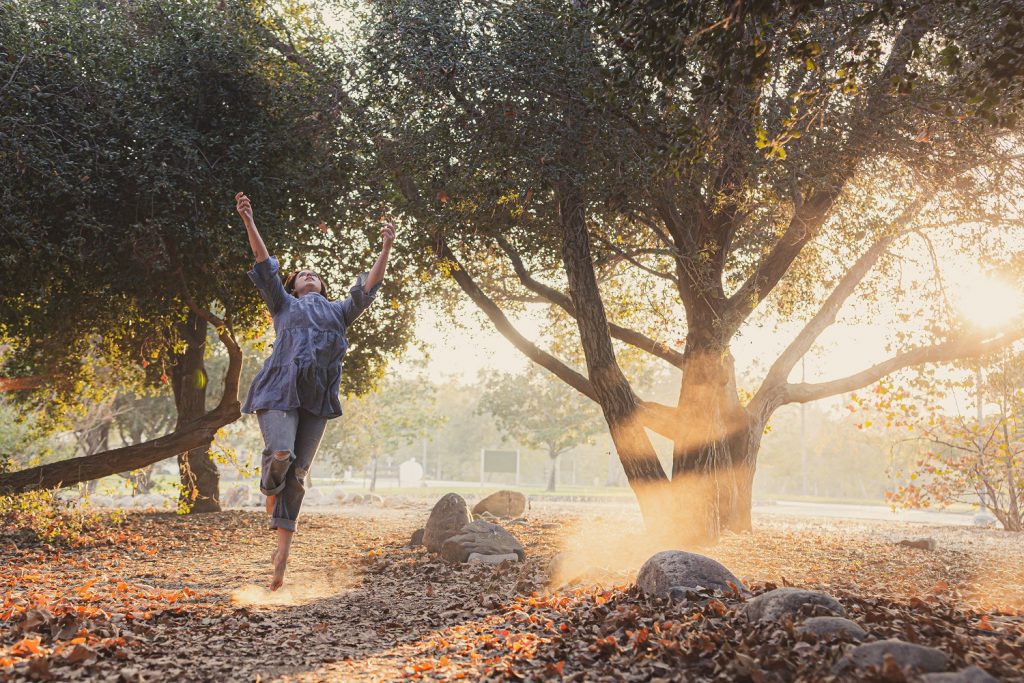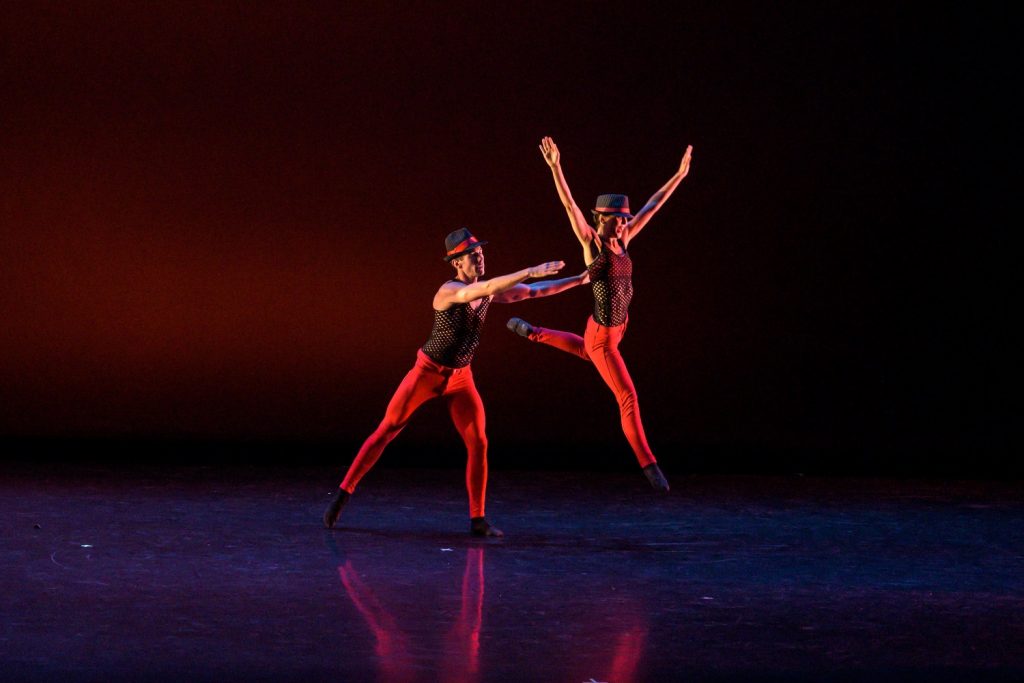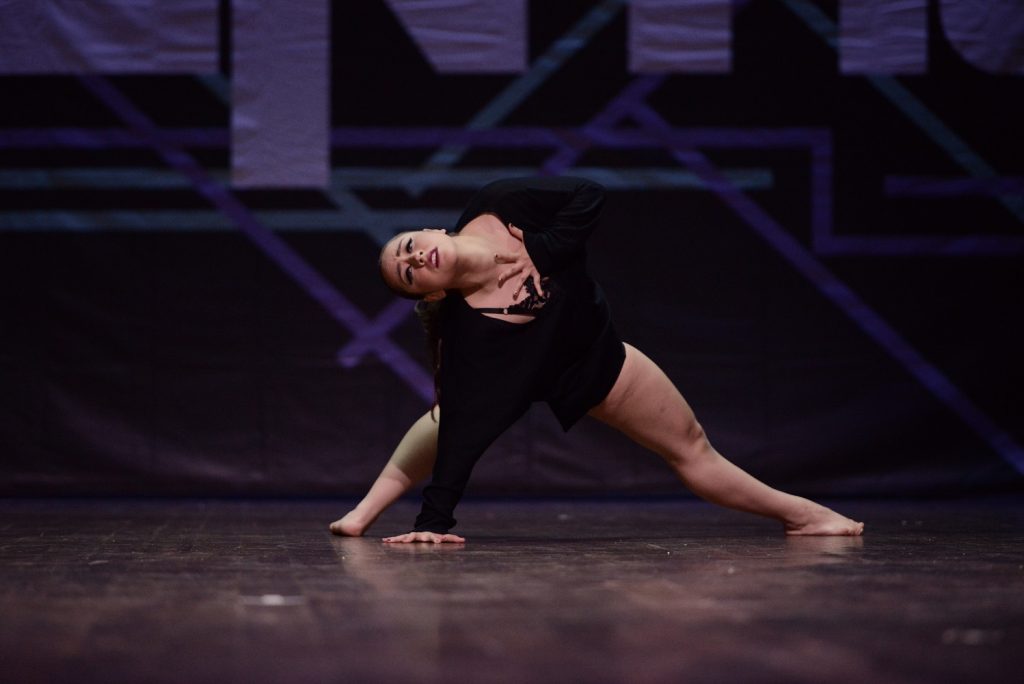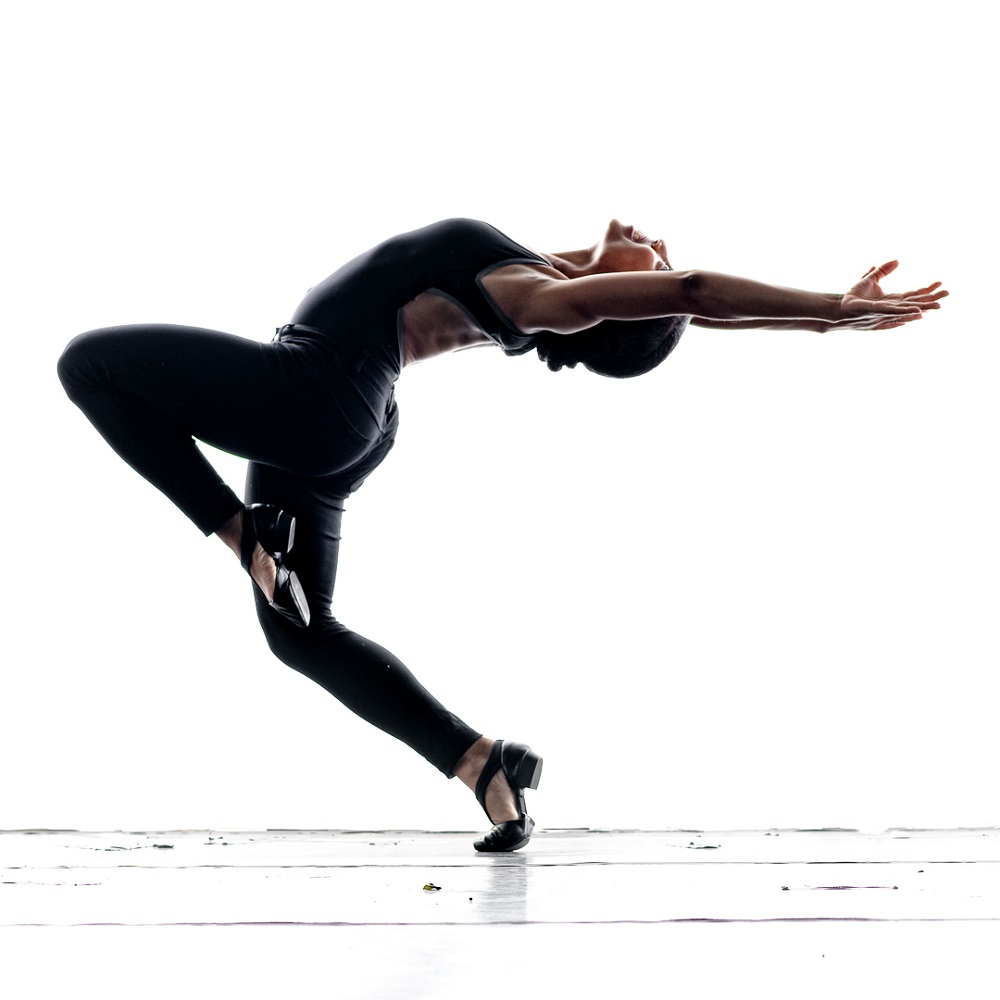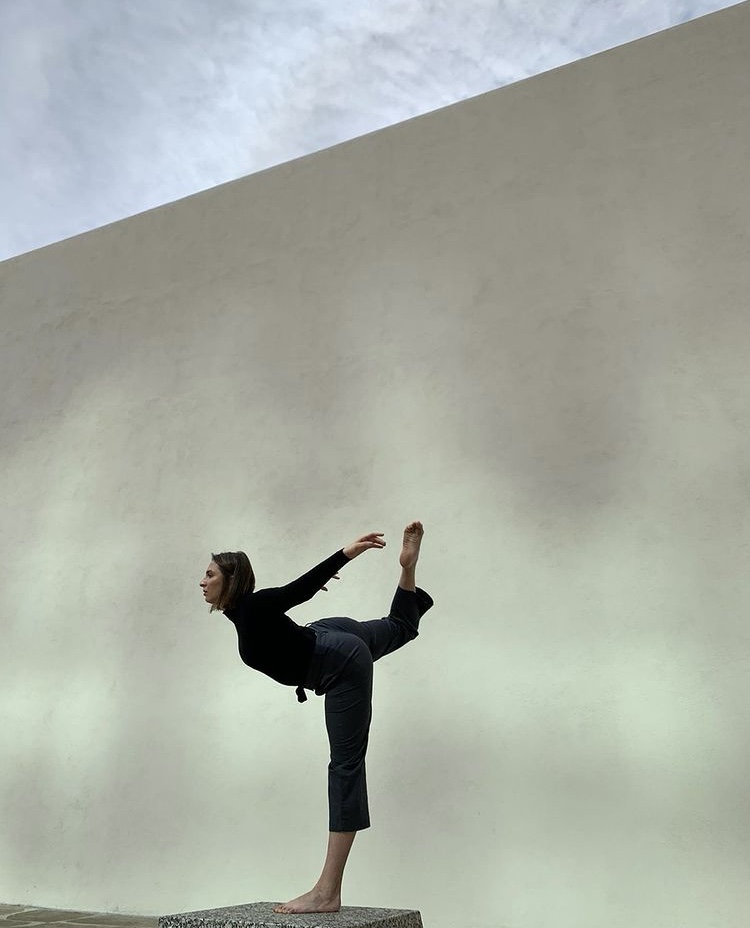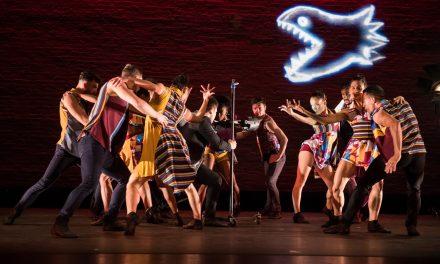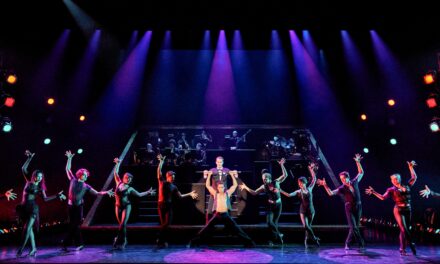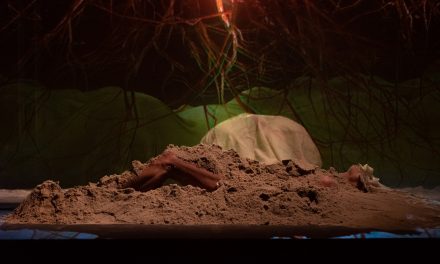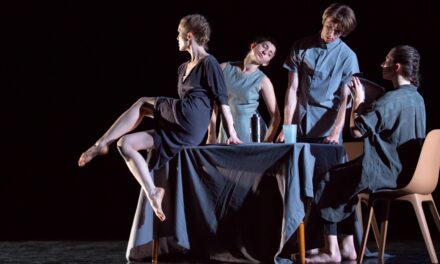On May 9, 2021, I had the privilege of viewing the Orange County Dance Festival’s virtual performances along with their live shows, produced by AkomiDance, a company co-artistic directed by Marie Hoffman and Melesio A. Aceves as well as managed by Alex Rasmussen.
There is a lot you can do with dance, even when you don’t have a stage, which is what many of us came to realize by having to experience dancing for film. The execution, energy, and drive behind a dance film is entirely separate from what we know and love so dearly about dancing on a stage. However, by this point, we’ve come to familiarize ourselves with dance for film, and there is so much beauty in that as well. This dance collective reflected all aspects of what virtual performances are these days, and I am proud that shows like these are what we can present of dancers during a global pandemic.
To kick off the first virtual show, PGK Dance presented a piece entitled, “Perspectives,” choreographed by Peter G. Kalivas, filmed by Ryan Kuratomi, and danced by Jessica Kelley, Stephanie Vasquez, Shauna Tyser, Chelsea Antczak, Bryan Burns, and Kyle Patrick Vaughn. Visually, “Perspectives” was stunning. The building in which this dance took place was industrial yet artful, and the sections filmed outdoors were bright and filled with luscious greenery. Each outfit was of the same color scheme (reds, blues, and varying beiges), but it was obvious that each dancer added their own flare to the costume, which brought their personalities to life and set them apart from one another. The movement was contemporary and flowed well, and it was incredibly pleasing to watch. This dance was a fantastic representation of how visually enjoyable dance films can be.
The Regina Klenjoski Jr. Dance Company (Savannah Jimenez, Milena Kerch, Brea Mora, Josephine O’Dea, Jessica Rimmer, Madeleine Sanada, Lily Simonowsky, Avery Thomas, Tiffany Tran, Annabelle Zaragoza) performed “Small Spaces,” choreographed by Brianna Barron and edited by Regina Klenjoski. I felt that this piece was an accurate representation of how lots of dance groups continued to produce dances during the pandemic: outside and spread out as well as individually danced, edited together after the fact. It was extremely endearing to see young dancers incorporated into OCDF, which is largely taken up by more mature and experienced dancers. I thought these young artists were an incredible addition, and they fit right in, not seeming out of place or awkward in the slightest. It was very refreshing and heartwarming to see.
Katelyn Martin, Katie Natwick, and Annie Von Heydenreich of Kairos Dance Company performed in the dance film “Heavy” choreographed by Hazel Clarke and sung by Mckenna Wells. This work is a great example of what I envision when I think of the idea of a “dance film.” The group was telling a story before they were presenting a dance. Movement was simply a vessel to display their plotline and message. Each woman, living a different life, expressed their struggles with mental health and surviving through a pandemic. Issues regarding work, family, and isolation all arise between these three dancers. The song, perfect to highlight prevalent emotions during this time, was strewn with audio clips from news channels bringing about frustrating and discouraging updates. The dance finishes with the women meeting up in a very pretty area where they unite as one and dance together. The video’s dull, greyish filter is lifted, revealing amazing, vibrant colors of a healthy headspace and world.
Western High School Commercial Dance (Thaire Guillen, Israel Hernández, Stephanie Lievanos, Annie Lopez, Ximena Marquiz, Valerie Ortiz, Katia Rivas) performed “Le Tournesol,” choreographed by Israel Hernandez. I was immediately captivated by this piece because of the song, “Mystery of Love,” which I absolutely love. I associate that song very closely with the book and movie “Call Me By Your Name,” set in Italy in the summertime, packed to the brim with gorgeous imagery and symbolism. I have no idea if this dance has anything to do with that, but it was set outside under a clear, blue sky, and each dancer was wearing a dress or shirt covered in sunflowers. This video was reminiscent of what my own high school did to replace in-person dance shows earlier this year. I thought it was extremely well-done and appealing to the eye.
“Sankofa/ Kalayaan” was choreographed by Alyssa Junious of Continuum and edited by Pauline Scully. This was a more whimsical take on feeling trapped and alone during this pandemic. It is set outside, beginning with Junious sending a possible break up text before revealing that she is trapped in a white, rectangular structure, covered in saran wrap. News clips are present in this film as they were in “Heavy,” but instead of outright showing the dancers’ struggles and moment of reuniting with others, this storyline plays with visions and hopes of escaping isolation and strife as Junious dances unyielding and completely free through nature. It is evident that this dream-like, idealistic jaunt through the outdoors is not truly happening because the film often cuts back to Junious trapped in the white structure. It is only an illusion she is free from her cage. Junious finishes dancing to a lovely spoken word poem, “The Miracle of Morning,” written and read by Amanda Gorman, preaching togetherness and standing with the world around us to learn from this experience and stay hopeful with a purpose, rather than giving in to frustration, grief, and loss.
The final piece of the first virtual show was called “Antics,” performed by the Street Dance Orixas (Felipe Costa Dos Santos, Rogerio M. Silva “Indo Medeiros,” Amy “Catfox” Campion, Valdemar “Zote” Cruz Neto, Joseilda “Josi” Da Silva Nascimento Cruz, Damasio Fernandes, Fabiana “Fabgirl” Silva Balduina), choreographed by Amy “Catfox” Campion in collaboration with the other performers, filmed by Noah Berlow, and animated by Matt Sheridan. Nearly 15 minutes long, each dancer had their own solo before they all came together in the end for what looked like an improv circle. The environment was unbelievably cool, and the movement was strikingly different from the other dances in the show as it was mostly hip hop and breakdance. The dancers all exhibited their own personalities through their movements, while animated lines and colors flashed across the screen. Eventually, when all of those individual colors swirled around each other and fused into one swirling circle, the artists danced together as a giant group, support for one another radiating strongly as though they were one huge family. The dancing was impressive, different, and insanely controlled as each dancer showed immense strength and talent. The editing was like that of a music-video and obviously skilled; it was evident that this video was not Berlow’s first. I was thoroughly satisfied with this film as a whole; it displayed seclusion as well as community, which was such a fun and exciting thing to see, especially to end this entire show that toyed with both isolation and togetherness.
The second virtual show opened with Marie Hoffman and Chris Smith’s dance film, “Reborn,” set on the APA Dance Company (Devin Adamson, Amelie Capron, Lilli Dunn, Jessie Hernandez, Hailey Holcomb, Avery LeBlanc, Madison Lynch, Sofia Nelson, Grace Ng, Nicole Okada, Isabella Piechota, Jeslyn Russell, Sierra Sifuentes, Hannah Uemera, Kole Williamson, Renee Yang), and videoed by Aaron White. This dance is about exploring new elements and evolving, being reborn and searching for a purpose and identity. Everyone’s journey is different, and the film highlights Jessie Hernandez as the lead, visiting new places, meeting new people, and being welcomed into those spaces, joining the other dancers to express the story through movement. White’s videography was immaculate and professional, and Smith and Hoffman’s choreography was imaginative, bold, and hard hitting. The wardrobe was unique and each setting featured new outfits that reflected the dancers’ personalities. The different environments Hernandez visited embraced her; each was dreamlike and isolated aside from the performers themselves. The journey captured in this film can be interpreted differently for each person viewing it, which is exactly what makes it so alluring.
Themes of isolation resurface in the piece, “Solitary,” performed and choreographed by Luciana Martinez and filmed by Zachary Lombardo. This film was very abstract and artistic in the best possible way. I enjoyed watching the organic movement and fascinating lighting choices. The settings in and outside of her house exude this wintery yet comforting energy, despite the obvious cold. Martinez’s purposeful articulations and quiet yet strong spirit were evident throughout. This dance was ethereal and captivating, and I felt that the camerawork, choreography, and environment really made that happen most for “Solitary.”
Contempo Ballet presented “Barras Y Barreras (Barres and Barriers),” choreographed by Jose Costas and danced by Nicole Clark and Anwar Cruz, highlighted the story of “two lovers [who] meet at the border for an intimate moment before saying goodbye.’” This marvelous duet displays a tragic love story of the two dancers as they share a farewell, demonstrated via gorgeous lines and emotional connection. This is likely the most technically dense piece of the show, and the experience of the dancers was quite obvious, making me feel at ease when watching the two interact. The work was executed on a real stage, utilizing a ballet barre as a prop and lighting to convey the message of the dance. It was pleasing to watch two people take up a stage and so confidently interact with each other as well as their prop. The story was wonderful and so was the dancing.
Cheng-Chieh Yu choreographed and directed “Inservient’,’ performed by Darrian O’Reilly, Sarah Jacobs, and Cheng-Chieh Yu, videoed by Jingqiu Guano. The piece was artistic, confusing, and beautiful, and I loved every second of it. “Inservient” was more film than dance, but I was not upset by this in the slightest. From what I could tell, the dancers were performers that felt like they were slaves to their craft. Their makeup was stunning and the parallels drawn to fish trapped in a fish tank were intriguing and unique. This work of art reminded me a lot of the opening scene in the 2004 movie, The Phantom of the Opera, where everything is black and white before the show begins. It was breath-taking and ominous and mysterious in all the best ways, and the lack of distinct music really added to the intensity and unease. The sadness and feeling of being overworked emanates off of each dancer, most clearly seen through their tired, expressionless faces. This work of art certainly deserves to be its own scene from a movie.
Marimar López Tovar choreographed and performed “Glitch in the Brain,” about having anxiety and feeling helpless to this struggle. I quite liked this addition to the show; the way it was presented as a dance film, edited and the execution all came together to make clear that “Glitch in the Brain” was stronger and more impactful as a film than it likely would have been presented on a stage. The spoken word introduction, written by Tovar herself, begins as she lies on the floor, writhing in self-doubt; it is powerful and accurately displays feelings of isolation in anxiety. The choreography can be characterized by thrashy, throw away movement that made it feel as if Tovar was actively trying to shake out and rid herself of her anxieties. I felt that “Glitch in the Brain” made an important statement about mental health that many people could relate to and feel seen by in an unexpected way.
“The Revolution Will Not Be Televised,” choreographed and danced by Tashara Gavin-Moorehead used Gill Scott Heron’s spoken word funk poem from 1971 in an interesting, commendable way. In the poem, Heron is essentially arguing that a revolution cannot be televised because those participating in said revolution will be out making it happen, rather than sitting at home, watching it happen before them. Throughout the work, Gavin-Moorehead’s desperate wild movements show how strongly she believes in Heron’s sentiment. Her passion can be felt through the screen, and her emotions are plain and clear on her face. This dance is incredibly powerful and inspiring, and I felt that its inclusion in this production is particularly important.
Victoria Himes choreographed “How Can You Mend a Broken Heart,” which was danced by Sophia Bernardo and shot and edited by Brooke Schulte. The film felt dreamlike and artful like “Solitary” in its environment and lighting. There was much more emotion and expressiveness on this dancer’s face, however, so there was a clear divide in the meanings behind each. There was an obvious emphasis on musicality, and it was pleasing to watch, knowing that this dance was created specifically for this song. I believe this provides a story with more meaning and desire. Himes’ addition to the virtual show was short and sweet, beautifully performed and shot. I really loved it a lot.
The final piece of OCDF’s second virtual show was another by Continuum, entitled “Towards the Sun,” choreographed by Alyssa Junious and performed by Dana Follegati, Charlotte Battle, and Alyssa Junious. The work was a decent length, but because it was pretty, time flew past. The environment and camera work was engaging, and the dancers expressed impressive synchronicity with one another. Their purpose and passion was written on their faces the entire time, never losing focus and energy. The colorful costume changes were extremely cool, and the strong connection among the three dancers was fun to watch as an audience member because I could tell they were really having fun and enjoying themselves.
It was an absolute honor to be able to watch these incredible dancers and choreographers in Orange County Dance Festival’s virtual performances. I am so glad I was able to experience so much talent in one show; it was truly remarkable.
To visit the AkomiDance website, click HERE.
Written by Lilli Dunn for LA Dance Chronicle.
Featured image: Orange County Dance Festival 2021 – Work by Marimar Lopez Tovar – Screenshot courtesy of the artist

